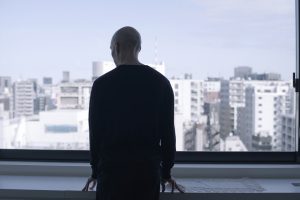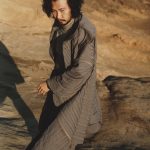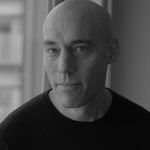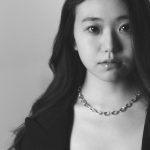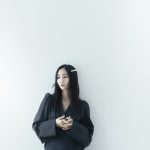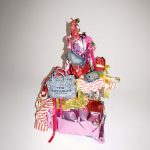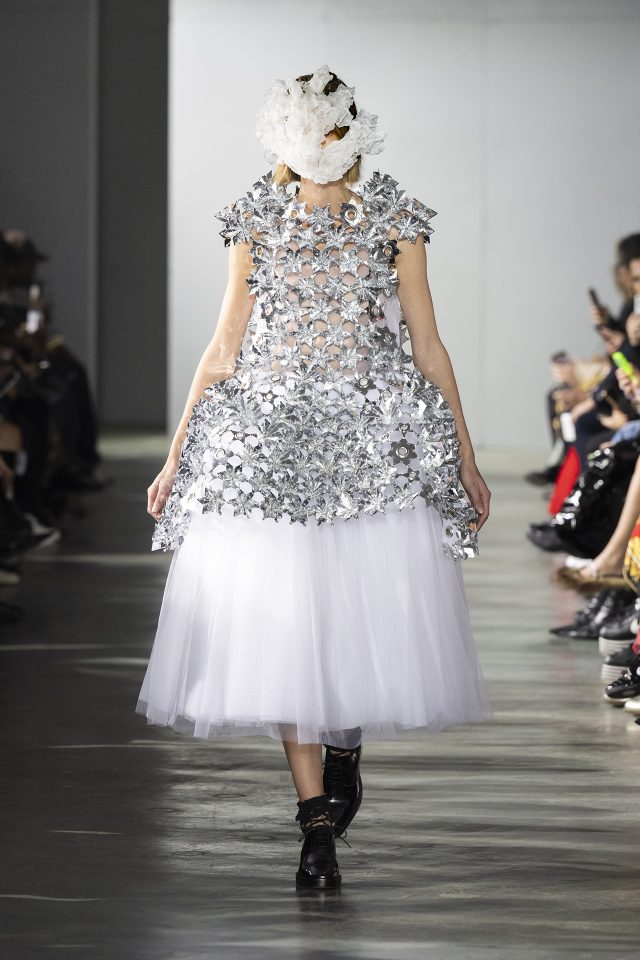THEATRE PRODUCTS(シアター プロダクツ)金森香インタビュー
News
THEATRE PRODUCTS(シアター プロダクツ)金森香インタビュー
Interview With Kao Kanamori
今年で10周年をむかえ、いまの東京を代表するブランドの中でも独特のポジションで異才を放つTHEATRE PRODUCTS(シアタープロダクツ)。このブランドのプロデューサーを務める金森香氏は、日本のファッション業界内のコミュニケーションや意見交換を目的とした「ドリフのファッション研究所」を企画・運営するなど、日本のファッション業界について考え、自身も積極的に活動をしている人物である。そんな金森氏に、彼女のバックグラウンドから日本のファッションまで話を聞いた。
*You’ll find the English text after the Japanese.
今年で10周年をむかえ、いまの東京を代表するブランドの中でも独特のポジションで異才を放つTHEATRE PRODUCTS(シアタープロダクツ)。このブランドのプロデューサーを務める金森香氏は、日本のファッション業界内のコミュニケーションや意見交換を目的とした「ドリフのファッション研究所」を企画・運営するなど、日本のファッション業界について考え、自身も積極的に活動をしている人物である。そんな金森氏に、彼女のバックグラウンドから日本のファッションまで話を聞いた。
—金森さんのバックグラウンドを教えて下さい。
学生の時にセントラル・セント・マーチンズ・カレッジ・オブ・アート・アンド・デザイン(以下: セントマーチン)に通っていました。今はもはやないんですけど、「クリティカル・ファインアート・プラクティス」という名前の学科で、批評的な視点を学びながら創作も同時に行うという実験的な場でした。Damien Hirst(ダミアン・ハースト)とか、Julian Opie(ジュリアン・オピー)とか、いわゆるイギリスのコンテンポラリーアートが盛り上がった時代の若いアーティストたちが作った学科で、美術史や現代社会の状況をふまえ、コンセプチュアル・アートをどういう風に読み解くか、というような勉強していました。本当は演劇がずっと好きだったので、初めは舞台美術の勉強がしたくてロンドンに行ったんですけど、行ってみたらとても保守的な授業や作品が多いようにみえたのと、当時のアートシーンが刺激的だったので、舞台美術は専攻せず、ファインアート学科に在籍して自分の思い描く舞台美術をそこで考えてみようと思いました。
—演劇が好きになったキッカケは?
親が舞台美術家なんです。父親はわたしが5歳の時に癌で亡くなったんですけど。たぶんずっと憧れがあって、子供のときに劇団の人たちとすごした時間と、その人たちが作りあげる舞台上の物語と、それらの合間みたいなものにずっと惹かれていました。
—当時、日本人でセントマーチンに行っていた人は?
少ないけどいました。私の通っていた学科には日本人がいなかったけど、ファッションの方にはいました。tao COMME des GARÇONS(タオ コム デ ギャルソン)の栗原たおちゃんとか、スタイリストの柳田真樹ちゃんとか、『VOGUE NIPPON』編集の廣瀬純子さんとかが、同学年ですね。当時ファッションにはまったく興味がなかったんですけど、日本人がいるからっていう理由でファッション学科に遊びにいったりしていました。その時はまさか自分がファッションを仕事にするとは全然思わなかったのですが。今思えば一緒に映像作品を作ったり、ショーなどのプレゼンテーションを手伝ったりとか、知らずのうちに共同制作をしており、そのようなことを通して興味を持つようになりました。
演劇ってフィクションをつくり込む身体芸術ですけど、ファッションもある意味身体芸術だけど実際の街や生活の中でどんな虚構ができるのかを挑戦していて、かつポピュラリティもあって、なんと実践的で影響力のある表現なんだって学生のときに感動して、興味をもつようになりました。
—帰国後は?
帰国してからはなにをやるのか全く決めてなかったですけど、表現者と仕事をしている現場の人たちの方法論を学ぼうと出版社のリトルモアで丁稚奉公から始まって、しばらく勤務しました。そこでリトルモア・ギャラリー(現: リトルモア地下)というリトルモアの刊行物をPRするイベントスペース立ち上げることになり、なぜかそこの担当になったんです。
とりあえず色々な作品を観なきゃと思って、若手のクリエイターや学生の展覧会をたくさん見てまわっている時に、たまたまなにかのグループ展で武内昭(THEATRE PRODUCTSデザイナー/代表)と中西妙佳(THEATRE PRODUCTSデザイナー)の作品を観て、ちょっと他人事ではないかんじがして、彼らの次作るものが見たいと思ったので、一緒に展覧会をしませんかという話をしたのがキッカケです。そこから1年のうちにみんなで会社もつくって、それは早かった。立ち上げ資金をリトルモアが貸してくれたりして。全然儲からないからいまだに返せてないですけど。倍にして返さないといけないのに!(笑)最初は、THEATRE PRODUCTSは全然利益があがらないので、二足のわらじで手伝うみたいな感じでした。中西はサンエー・インターナショナルで働いていて、武内はCOMME des GARÇONSを辞めた後で、中西はしばらくしてから辞めたような。でも、まさか10年も自分がこの仕事をやるとは思わなかったですね。
—金森さんは仕事の幅が広いですよね。今はどんな仕事をされているんですか?
仕事はTHEATRE PRODUCTS(シアタープロダクツ)とN.P.O. DRIFTERS INTERNATIONAL(NPO法人ドリフターズ・インターナショナル)。基本的にはその2本です。THEATRE PRODUCTSは広報的な企画だったり、経営的なことをやっていて、ドリフターズは色んなジャンルを横断してコミュニケーションが生まれるようなイベントとかスクールなどやっています。
—ドリフターズ・インターナショナルについて教えてください。
現在、立ち上げてから2年が経っているのですが、メンバーは建築家の藤原徹平と演劇プロデューサーの中村茜と私で運営しています。そもそもはジャンルごとの垣根をこえて若い人たちが情報交換できたり、一緒にモノづくりするようなプラットフォームを作るという趣旨で始めました。「ドリフターズ・サマースクール」ていう集中夏期講習授業をやったり「港のスペクタクル」(横浜)や「スペクタクル・イン・ザ・ファーム」(那須)という企画では地域と連携してクロスジャンルのイベントで化学反応をおこし、新しいコミュニケーションの回路を生み出すという実験をやっています。そういった活動の中で演劇業界の人とか建築業界の人をみていると、業界内の意見交換がすごく盛んであるということに気づきました。おそらく大学とか研究機関とかがきちんと機能していたり業界団体もしっかりあったり、演劇は演劇で行政と絡んでやっていかないといけない部分があったりするから、みんなで力を合わせてやっていかないと成り立たないということもあって。それに比べるとファッションはほんとに交流や意見交換の場がないなって思って。それで「ドリフのファッション研究所」というのをやってみたんです。
—あれはおもしろかったですよね。
来ていただいてありがとうございます。でも勢いで始めたら勢いがついてしまって、すごく大変だった。忙殺されて死んじゃうかと思ったので(笑)。今はいったんお休み中ですが、もうちょっと一緒にやれそうな人がいたらまた始めたいなと思っています。いまはファッション、アート、デザイン、建築の分野でトークイベントがけっこう流行っていますよね。一般に開かれたトークの場は一方で実施しながら、一方でもうちょっと勉強会よりの企画もやれたらいいのかなって思っています。ある程度クローズドな環境で、その業界にとって切実な問題に関して議論するとか。そういうようなコトはしていきたいと思っています。現場はクローズドな環境だけど、話し合われた内容や成果はオープンソースにする。みんながアクセスできる情報として開いていけるようなコトができたらいいなと。いま例えばマイクロファンディングというような仕組みも少しずつ一般化してきているし、情報も専有物にしないで、みんなで共有していってより良い環境づくりというものをお互いに考えていくような仕組みに挑戦してみたいです。
—「ドリフターズ・サマースクール」はどういったスクールなんでしょうか?
今年3年目をむかえる夏の3ヶ月間の講座で、ファッション、建築、制作宣伝、ダンスの4コースの受講生が、全体でひとつの舞台作品を作り上げるというものです。ファッションをやっている人が建築のコース受講したりとか、参加者の方々が他の分野と接したくてくる人が多いので、おもしろい交流が生まれています。私たちも若い人たちと会うことで良い刺激になるし、受講生のジェネレーションだけでなく、それを教える講師陣のジェネレーションに交流が生まれることも一つのねらいです。今年のファッションコース講師は山本亜須香(FUGAHUMデザイナー)と山下陽光(途中でやめる)にお願いしました。共にファッション外の分野との緊張感を持った関係性を築いている方々なので、ファッションデザインが、どういう価値を持っているのか、自分たちの武器に気づけるようなコースになるのではないかと、楽しみにしています。
—スクールを運営している立場から、今ファッションの業界で働こうとしている若者たちに必要なコトってなんでしょうか?
社会人になってからも勉強していける/いかなくちゃならない、ということへの気づきや、他者に対する興味を植え付けることでしょうか。今の時代になにを問うべきなのか?社会全体の状態からみて自分のいる業種やファッションがどんな役割をしていて、どんな影響をあたえているのか?あるいはどのように影響が出始めているのか?そういうのを客観的にとらえるコトに興味を持つ人が少ない気がしています。
「好きを仕事に」という考え方も悪くはないと思いますが、そういう視点だけではなく社会的役割っていったら大げさになりますが、もうちょっと引いたところから自分のやっている職業や業界を見られたら、いいのではないかしらと。もうちょっと長いスパンでデザインや活動をとらえたからこの選択、という発想がうまれてきたらいいなと思います。創作への没頭も大事ですが、同時に、どういう状況にいるのかを考えなきゃという発想の回路がインプットされていれば違ってくるかなと。
だって今新しいコトをやりたいって野心を持っている人がファッション業界にくる気がしないですもん。どちらかというとなにかを世に問うというモチベーションより、自己実現の手段としてファッションをとらえている学生が多い感じが強いですね。悪い事ではないと思いますが。そういう表現も私自身は大好きですが、産業としてのファッションや、社会への挑戦への野心も兼ね備えてある人が出てきたらもっといいのに、と思います。
—JFWの今後のあるべき姿について、金森さんの見解が聞きたいです。
JFWというか、ファッションショー週間にかかる全般ということになりますが、もうちょっと戦略が参加者にも、鑑賞者にもわかるように明確にしていけたら、良いかもしれないですね。参加ブランドや、周囲の方々とはっきりと目的が共有できた上で、そのゴールに共感するブランドやプレスの意見を汲みながら計画できたらいいでしょうね。それぞれの会社のステージも規模も様々だと思うので、全部には答えられないでしょうし。最終的なゴールの設定をみんなが共有できるところが重要かもしれません。
とはいえ、こうして意見をいうのは誰にでもできますし、より示唆に富んだ意見もあるでしょうし、実際さんざん議論はされているかと思います。重要なのは、言うだけではなくそれをどう現実化して落とし込むかっていう実施レベルまで責任持てる人で、かつ新しい考えを持っているチームが、押しつけでなくて、参加者のなかから、あるいは参加者をまきこみながら、出てくることが、重要な気がします。
<プロフィール>
金森 香(かなもり・かお)1974年生まれ。シアタープロダクツプロデューサー/プレス。セントラル・セント・マーチンズ・カレッジ・オブ・アート・アンド・デザインの批評芸術学科を卒業後、出版社リトルモア勤務を経て、2001年有限会社シアタープロダクツ設立、現取締役/広報・プロデューサー。09年よりスペクタクル・イン・ザ・ファーム実行委員長、10年よりNPO法人ドリフターズ・インターナショナルをスタートし理事を務める。「ドリフのファッション研究室」なども企画している。
Entering their 10th anniversary this year, THEATRE PRODUCTS bears a unique and distinguished position as one of the representative brands of Tokyo. The producer of this brand, Kao Kanamori, who dwells in thought about the Japanese fashion industry, is an active individual responsible for a number of projects, including the organization and management of the “Drifters Fashion Laboratory,” established in aim to encourage communication and the exchange of ideas within the fashion industry in Japan. We asked Kao Kanamori about her background and her ideas on the current Japanese Fashion Scene.
—Please tell us about your background.
In my school years, I was a student at Central Saint Martins College of Art and Design. Although it no longer exists, I took a course called “Critical Fine Art Practice,” an experimental course in which we engaged ourselves in creative projects while simultaneously learning various perspectives of criticism. This course was established by Damien Hirst, Julian Opie, and other young artists of that generation when contemporary art gained popularity in England. Its aim was to analyze conceptual art based on art history and the current situation of modern art. To tell the truth, I was always interested in theater and initially went to London to study stage design. However, the stimulating art scene at the time in addition to the fact that I felt many of the theatrical classes and works were conservative, influenced me to major in fine art instead, with the ambition to establish my very own idea of stage design.
—What made you interested in theater in the first place?
My father was a stage designer, although he passed away to cancer when I was five. I guess I always admired what he did. The time I spent with the theatrical crew and the performances I saw played upon the stage attracted me to the world in between.
—Were there any other Japanese students at Saint Martins at the time?
Not many but a few. Although there were no Japanese students in my course, there were a few in fashion. Tao Kurihara from COMME des GARCONS, stylist Maki Yanagida, and the editor of VOGUE NIPPON, Junko Hirose, were all in the same grade as me. Although I didn’t have any interest in fashion, I wondered over to their classes quite often to see my Japanese friends. I never imagined I will be working in fashion at the time. Thinking back on it now, I suppose I gained interest through collaborating with them, making movies together and helping out with their presentations for shows.
Theater is the creation of fiction through body art. I feel fashion is also in a way body art that challenges the creation of fiction in actually existing towns and real life. It is also very popular. As a student, I gained interest in fashion, inspired by its practicality and influential power.
—What did you do after you came back to Japan?
I hadn’t a clue on what to do after I returned. I started work as an apprentice at the publishing firm Littlemore in order to learn the methodology of people working with artists. For some reason, I was put in charge of the creation of Littlemore Gallery (now known as Littlemore Chika), an event space to promote Littlemore’s publications.
Thinking I should see as many works as possible for reference, I went around many young creator and student exhibitions, and happened to come across a group exhibition by Akira Takeuchi (THEATRE PRODUCTS Designer/Director) and Tayuka Nakanishi (THEATRE PRODUCTS Designer). I found their work very appealing, and wanting to see more, I offered to do a joint exhibition. Only a year after that, we founded the company. That was really quick. Littlemore even leant us the start-up funds. We still haven’t earned enough to pay them back though. Although we are planning to pay back double the amount.
At the beginning, since THEATRE PRODUCTS couldn’t make any profit, I had to juggle two careers. Nakanishi was working at Sanei-International at the time and Takeuchi had just quit COMME des GARCONS. I think Nakanishi quit just a while later. I never expected I’ll still be doing this 10 years later.
—Your work is very extensive. What are you currently working on?
I basically just have two jobs. THEATRE PRODUCTS and N.P.O. DRIFTERS INTERNATIONAL. At THEATRE PRODUCTS I’m in charge of management and projects concerning public relations. At DRIFTERS, I plan events and schools that encourage communication across a variety of genres.
—Tell us about DRIFTERS INTERNATIONAL
It is now two years since its establishment, and I am currently managing it with Architect Teppei Fujiwara and Theatrical Producer Akane Nakamura. I originally started it in order to create a platform in which young creators can exchange ideas and collaborate with creators of different genres. We run concentrated summer courses called the “Drifters Summer School” and organize events such as the “Port Spectacle” (Yokohama) and the “Spectacle in the Farm” (Nasu), a joint effort with the respective regions in aim to experiment the chemical reaction of cross-genre events and produce a new circuit of communication. Through the execution of these events, I realized that the exchange of ideas is very active in the theatrical and architectural industry. I guess functional research institutions of universities and industrial associations are what enable this kind of communication. As for theater, since it involves the administration, I suppose combined efforts are crucial for it to function. As opposed to this, I felt the fashion industry lacks in the opportunity to communicate or exchange ideas. That is why I established the “Drifters Fashion Laboratory.”
—That was really entertaining.
Thank you for coming. Once I started, I got carried away. It wasn’t easy. I thought I was going to work myself to death. We’re on a break now but I’m thinking of starting it again once I find more people to work with. Talk events in the field of fashion, art, design and architecture are gaining popularity recently. Whilst organizing talk events open to the public, I’m hoping to coordinate other events similar to study sessions. For example events in which people from certain industries can discuss pressing matters in somewhat closed environments. Those are the kind of events I want to organize. Although they will be held in closed environments, the details and results of the discussions will be open sources in which anybody can have access to. In a time where micro funding is becoming generalized, I feel it is possible to create a system in which information is no longer exclusive, but something that can be shared so people can collaboratively work together on the realization of a better environment.
—What sort of school is the “Drifters Summer
It is a three month course that will be entering its third year this summer, and consists of students of four different courses, fashion, architecture, advertising, and dance, collaborating to produce a single stage play. Many of the participants take part in order to interact with creators from other fields so you get to see interesting interactions, such as fashion students taking architecture courses. Us elders are also stimulated by interacting with the younger generation. Our aim not only consists of the interaction between students, but also between generations. This year, we asked Asuka Yamamoto (FUGAHUM designer) and Hikaru Yamashita to teach the fashion course (Hikaru Yamashita for part of the course). They have both achieved tense relationships with creative fields beyond the realms of fashion, so I believe they are capable of teaching the students the values of fashion design. I’m sure it will be a course that will help the students realize their strong points.
—From the perspective of a school manager, what do you think is necessary for the younger generation who are about to enter the fashion industry?
For them to realize that it is possible/necessary to study even after they have started work and to bear interest in others. What sort of questions do they have toward this time and age? Having taken in account the current society, what sort of role do their professions or fashion play and what kind of influences do they have? Or how are such influences developing? I don’t think many of the younger generation show enough interest in such objective questions.
I am not against the idea of “doing what you like to do.” However, although it may sound exaggerating, I feel it is necessary to take a step back and observe what you are doing, the field you are working in and what sort of role it plays in society. I think it is important that the choices you make are a result of having grasped a good understanding of your design work and activities in the longterm. Although it is important to engross yourself in creativity, it will make a difference if you simultaneously keep in mind the current situation you are in
It doesn’t seem like there is anyone amongst those about to enter the fashion industry with the ambition to start something new. Rather than the bearing the motivation to question the World they are in, many seem to consider fashion a means of self-realization. I don’t necessarily think that is a bad think. I myself love that sort of expression, however I think it would be better if there were more people with the ambition to challenge the fashion industry or even society itself.
—What is your view on the future of JFW?
I feel not only JFW, but the entire fashion show week would be better if their strategy is much clearer to both the participants and its viewers. I think sharing a clear target with participating brands and those involved will enable the organization of shows that take in account the suggestions of brands and the press who share a common goal. Since each company’s stage is on a different scale, I’m sure it will be impossible to match the needs of all participants, but I feel it is important for everyone to share a common target.
Having said so, anyone can comment like this or come up with a variety of better ideas, and I’m sure many discussions are being carried out. I feel it is crucial that someone, together with a team with new ideas, takes responsibility for taking these suggestions to the next level by realizing them, not simply by force, but in cooperation with the participants.
<profile>
Kao Kanamori. Born in 1974. THEATRE PRODUCTS Producer/Press. Graduated from Central Saint Martins College of Art and Design, Critical Fine Art Practice Course. After working for the publication firm, Littlemore, founded THEATRE PRODUCTS in 2001 and is the acting Director, Public Relations Officer, and Producer. Executive Committee Chairman of Spectacle in the Farm from 2009 and Director of NPO DRIFTERS INTERNATIONAL established in 2010. Also the organizer of “Drifters Fashion Laboratory.”
